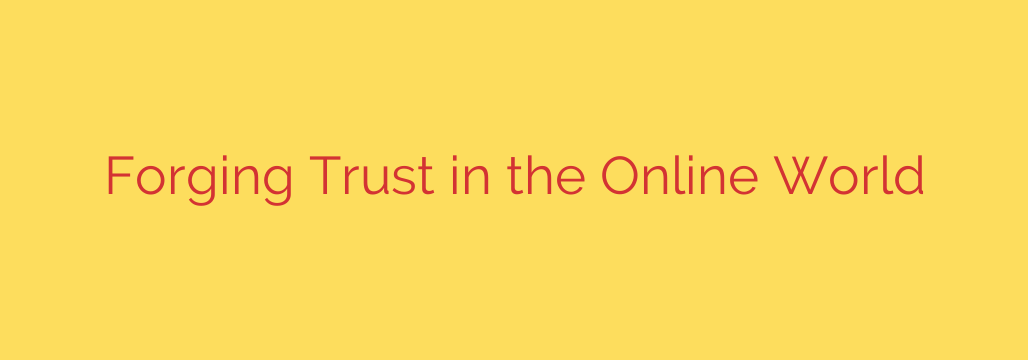
Building Trust in the Digital Age: Navigating the Online World Securely
In today’s hyper-connected world, our lives are increasingly intertwined with the internet. We shop, socialize, work, and learn online, making the digital realm an indispensable part of our existence. However, this convenience comes with significant challenges, particularly when it comes to establishing and maintaining trust. The online landscape, while offering unprecedented opportunities, also presents a complex environment where deception can be easily disguised, and verifying authenticity is paramount. Building and forging trust in the online world is no longer just a social skill; it’s a fundamental aspect of digital safety and security.
One of the biggest hurdles is the sheer volume of information and the ease with which misleading or false content can spread. Unlike face-to-face interactions where non-verbal cues and physical presence help build rapport, online interactions often lack these signals. This makes it crucial to develop a critical eye for what we encounter online.
Verifying Information and Sources
Before accepting information as true, especially anything significant or surprising, it’s essential to cross-reference details from multiple reputable sources. Be wary of sensational headlines, poor grammar, or websites that seem unprofessional or lack clear contact information. Understanding the potential motives behind online content – whether it’s advertising, opinion, or deliberate misinformation – helps in evaluating its trustworthiness.
Protecting Your Digital Identity
Building trust also involves protecting your own digital footprint. Strong, unique passwords are non-negotiable. Consider using a password manager to handle complex credentials securely. Be cautious about sharing personal information online, especially on social media or through unsolicited emails and messages. Phishing attempts, where scammers impersonate legitimate organizations to steal data, remain a significant threat. Always verify the legitimacy of requests for personal information, ideally by contacting the organization directly through their official website or phone number, not using links or numbers provided in the suspicious communication.
Recognizing and Avoiding Online Scams
Online scams come in many forms, from fake investment opportunities and fraudulent online stores to deceptive requests for help or payment. If something sounds too good to be true, it almost certainly is. Be skeptical of urgent requests for money, unexpected winnings, or pressure to act quickly. Never send money or provide financial details to individuals or entities you cannot verify.
Building and Maintaining a Positive Online Reputation
Your own online presence contributes to the collective trust of the digital world. Be mindful of what you post and share, as it reflects on you and can impact how others perceive your credibility. Engaging respectfully in online communities and interactions helps foster a more trustworthy environment for everyone.
Key Takeaways for Navigating the Digital Landscape:
- Question everything: Don’t blindly trust information or individuals online.
- Verify identity: Be cautious when interacting with unknown profiles or accounts.
- Protect your data: Use strong security measures and be smart about sharing personal details.
- Recognize red flags: Learn to spot common scam tactics and phishing attempts.
- Think before you click: Exercise caution with links and attachments from unverified sources.
Forging trust in the online world is an ongoing process. It requires constant vigilance, a commitment to secure practices, and a healthy dose of skepticism. By adopting these proactive measures, you can navigate the digital landscape more safely and contribute to a more trustworthy online environment for yourself and others.
Source: https://www.paloaltonetworks.com/blog/2025/07/building-trust-in-digital-age/








